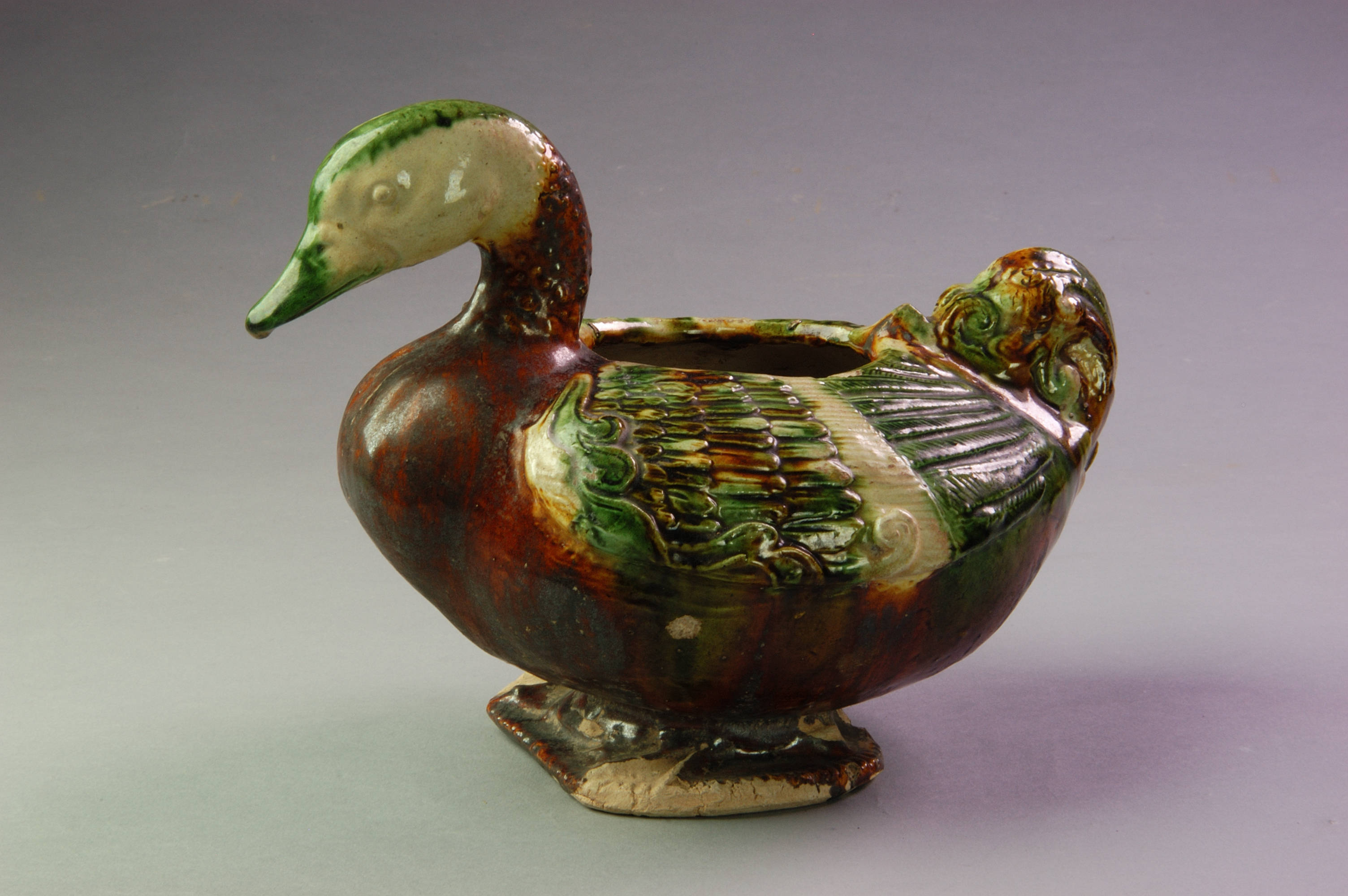Date: Tang Dynasty (618-907)
Provenance: Unearthed in Shili village, Xin'an county, Luoyang, Henan province, 1974
Measurements: Length: 29 cm, Height: 13.5 cm
As a common ancient wine container, this zun vessel adopts the form of a nestled mandarin duck, featuring an oval-shaped opening on its back. The duck is characterized by its flat beak, long neck, raised head, and curled tail, and it stands on a square platform.
Decorated with yellow, green, and white colored glazes, it presents a vivid and colorful appearance, rendering it an exquisite and unparalleled Tang sancai treasure. Mandarin ducks, collectively known as "Yuanyang" in Chinese, symbolize a duck couple. The feathers of the female duck typically exhibit a grayish-brown hue, while the male duck's feathers are notably more vibrant, making the male mandarin duck a common prototype in the creation of vessels depicting mandarin ducks.
Sancai ware, also known as tri-color glazed pottery, is a type of low-temperature fired glazed pottery that was prevalent during the Tang Dynasty. The glazes come in various colors, including yellow, green, white, brown, blue, and black, with yellow, green, and white being the predominant colors. Hence, it is commonly referred to as "Tangsancai" (tri-colored glazed pottery of the Tang Dynasty).
Sancai ware is remarkable for its diverse forms, vibrant colors, realistic shapes, and the essence of the times it captures. It aligns with the characteristics of plumpness, robustness, and expansiveness found in Tang Dynasty art, reflecting the aesthetic views and ideals of the time.
Tangsancai is a unique gem in the history of Chinese ceramics, reaching its peak during the prosperous era of the Tang. It comprehensively and intuitively reflects the political landscape and the grandeur of the era.

